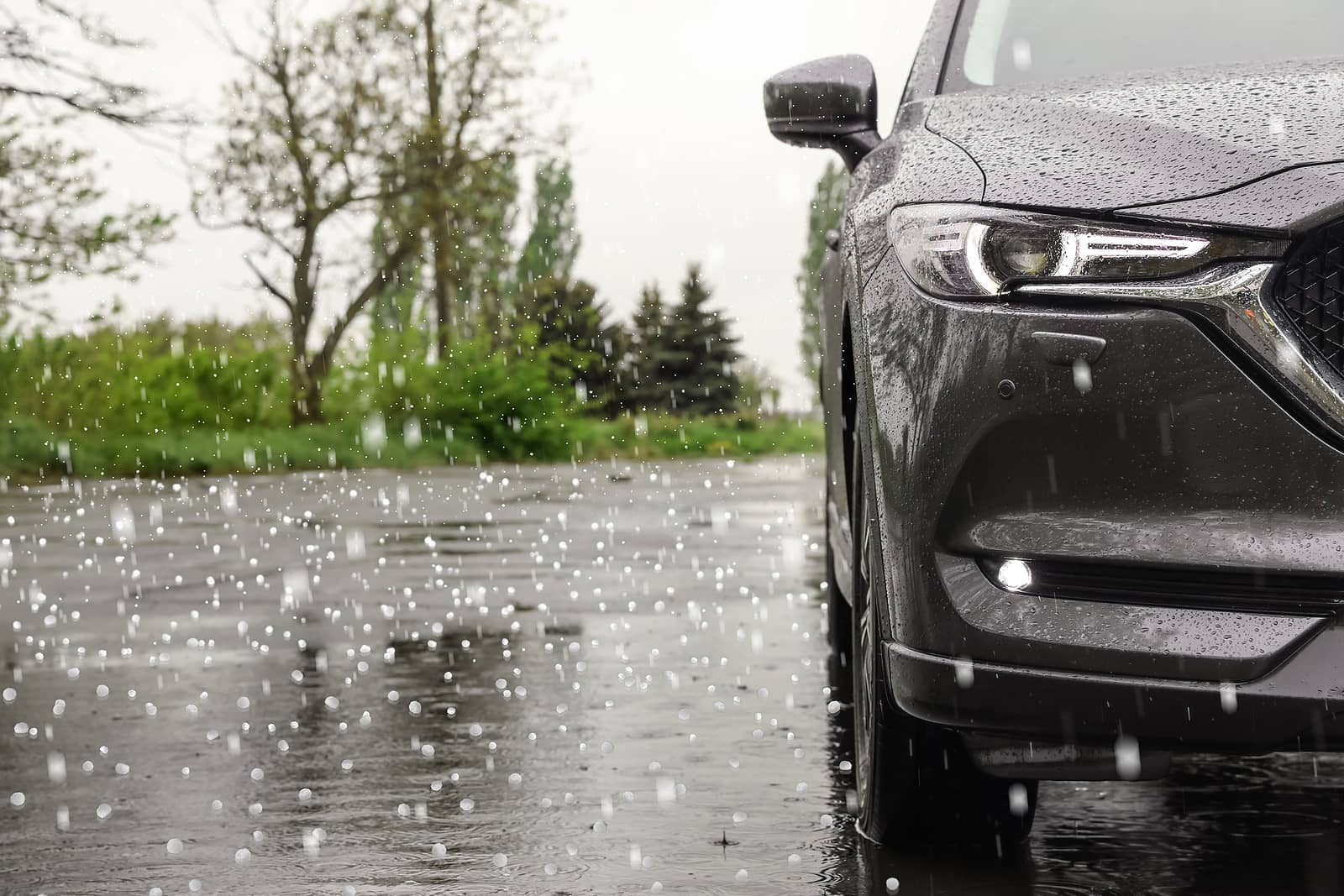UPDATED: AUGUST 07, 2023 | 1 MIN READ

Hailstorms can happen at any point of the year and cause severe damage to homes, streets, and vehicles. It’s possible that heavy hail can cause large dents, chipped paint, and broken windows to your car if it’s not adequately protected. In severe cases, hail damage can even cause a total loss of your vehicle. Fortunately, hail insurance can help you.
Costs associated with these repairs are generally high but don’t worry. These damages are likely covered if you carry comprehensive coverage on your auto insurance policy. This article will discuss comprehensive coverage, when to utilize it, and how to file a hail damage claim with your insurance provider.
Does car insurance cover hail damage?
The only auto insurance coverage that pays for hail damage is comprehensive. Comprehensive coverage is additional car insurance coverage that pays for damages to your car that were not caused by a collision. This includes theft, vandalism, water damage, fires, and hail.
Comprehensive coverage is not legally mandated but is highly recommended for all drivers. These policies come with deductibles; you are responsible for paying that deductible before your insurer starts paying your claim.
Depending on your vehicle and area of service, hail insurance has a deductible between $250 and $1,000. A general rule of thumb is that the higher your deductible, the lower your insurance premium.
Comprehensive policies usually have a limit, so insurers will only pay for damage up to your car’s actual cash value. Cars that are high in value, such as luxury sports cars or newer models, are generally more expensive to repair. Therefore, insurers will raise the price of your monthly premium to cover those costs.
Remember that filing a claim after a hailstorm is not always necessary. Hail damage can be minor, especially if you’ve taken preventive measures to protect your vehicle. Paying for repairs out of pocket may often cost less than your deductible.
Filing a claim may also lead to a premium increase, so paying for the damages yourself is a possible way to save money.
Full glass coverage
Some hail insurance policies may not cover damage to the car’s glass. Many major auto insurance providers offer an alternative option: full glass coverage.
Full glass coverage is an optional car insurance policy that covers damage to windows and windshields. Companies rarely charge a deductible, and premiums only increase to $15 monthly.
This type of coverage will not fix cosmetic damage to your vehicle, but it might be a good choice if you want some protection from hail damage costs.
Which drivers are at greatest risk for hail damage?
As mentioned previously, hailstorms can happen at any point of the year. Hailstorms can occur anywhere thunderstorms occur, which means all 50 states are susceptible to experiencing them. However, they are more likely to occur in the Great Plains and Midwestern states.
This includes Montana, North Dakota, South Dakota, Wyoming, Nebraska, Kansas, Colorado, Oklahoma, and Texas. Drivers in this region are more likely to encounter hail and should take frequent preventative measures against damage.
What if your car is a total loss?
Your auto insurance provider may deem your car a total loss after a hail storm if the damage is severe. If the repair damage cost is higher than the car’s value, insurers will usually pay you the car’s current value minus your deductible. If this happens, you can use that money towards repairs or invest it into a new vehicle.
FAQs
What are the benefits of your having car insurance that covers hail damage?
Your car insurance policy’s comprehensive coverage pays for hail damage to your car. Having this coverage protects you from hail damage, as well as other non-collision-related losses.
What’s the purpose of hail insurance?
Hail insurance protects your car in case of a loss caused by hail. This means you only pay for damages above your deductible.
What’s a deductible?
A car insurance deductible is the amount of money you pay before your insurance company pays an insurance claim. For example, if you have $1,000 in damage to your car and a $500 deductible, your car insurance pays for $500 of the repair costs and the remaining $500.
Getting hail insurance coverage
You need a comprehensive and full glass coverage policy if you want car insurance with hail damage coverage. To get the best deal, get multiple car insurance quotes before deciding.